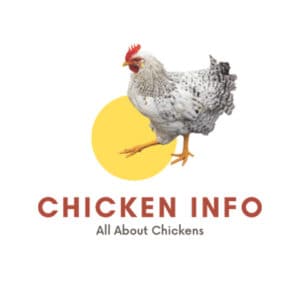Silkie chickens are a breed of chicken that are known for their soft feathers and calm demeanor. They are typically used as pets or exhibition birds. Silkies come in a variety of colors, including black, white, blue, and buff.

Origin
The Silkie chicken’s name is derived from its unique silk-like feathers. These feathers are so soft that they feel like silk, which is why the breed is aptly named. Silkies were first developed in China, where they were used as pets and ornamental birds. They eventually made their way to Europe and North America, where they are now popular among chicken enthusiasts.
The most well-documented point of origin for these unique fowl is ancient China, though other places in Southeast Asia, such as India and Java, have been named as possibilities. According to Marco Polo, the earliest existing Western written account of Silkies comes from the 13th century. He was writing about a “furry” chicken he saw during his time in Asia.
Characteristics
The Silkie (also referred to as the Silky or Chinese silk chicken) plumage feels akin to silk or satin. Beyond its unique feathers, this breed also has black skin and bones, blue earlobes, and five toes on each foot–as opposed to the more common four found on other chickens.
They are often kept as ornamental fowl or pet chickens by backyard keepers.
They’re also known for being calm and friendly, two remarkable traits for a bird. Furthermore, Silkie hens make terrific mothers who will diligently care for their young.
Eggs & Hatching
A Silkie chicken can lay anywhere from white to cream or light tan eggs, but their production is often halted because they have a higher than average chance of going broody. In an ideal year, a Silkie hen can produce 100 eggs.
Although these birds don’t lay many eggs themselves–approximately three per week–they’re commonly used to hatch eggs from other breeds due to their well-known maternal instincts.
We have had several Silkie chickens on our farm and more than once they have been broody. They raised other hens’ chicks as their own.
Climate
Silkies can be found all over the world and they can thrive in a variety of climates. They do well in warm climates, but they can also survive in colder climates if they have access to a warm shelter. Silkies are popular among chicken enthusiasts in North America, Europe, Australia, and New Zealand.
Popular Culture
Silkies have appeared in popular culture on several occasions. In the movie “Chicken Run,” the lead character, Ginger, is a silkie chicken. In the TV show “The Simpsons,” Homer Simpson owns a silkie chicken named Yummy Mummy. And in the children’s book “Charlotte’s Web,” Wilbur the pig is saved from being slaughtered by a friendly silkie chicken named Templeton.
Silkies make a good breed as a backyard pet. They have soft feathers and a calm demeanor. They come in a variety of colors. Furthermore, Silkie hens make terrific mothers who will diligently care for their young. A Silkie chicken can lay anywhere from white to cream or light tan eggs but their production is often halted because they have a higher-than-average chance of going broody.
